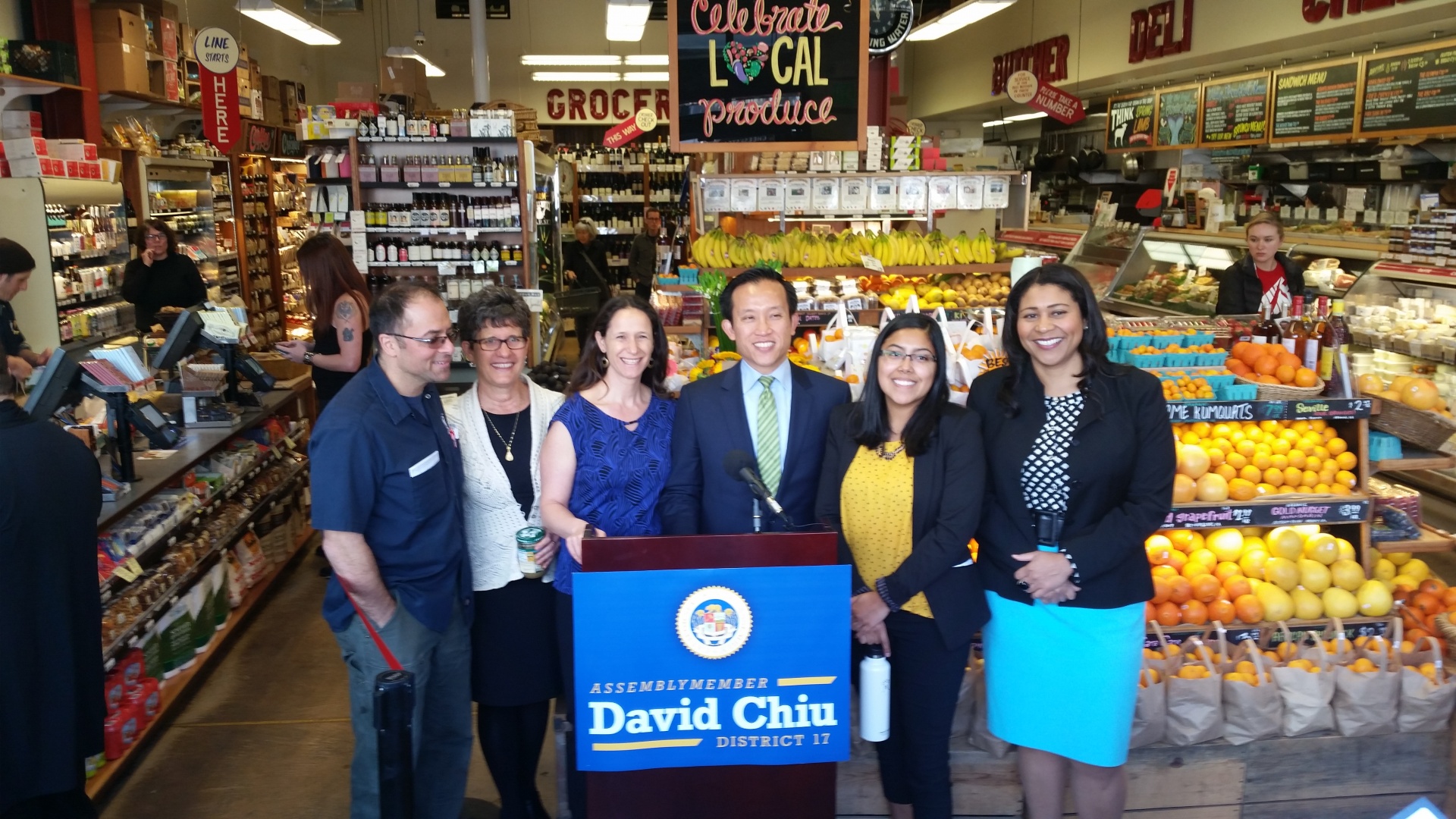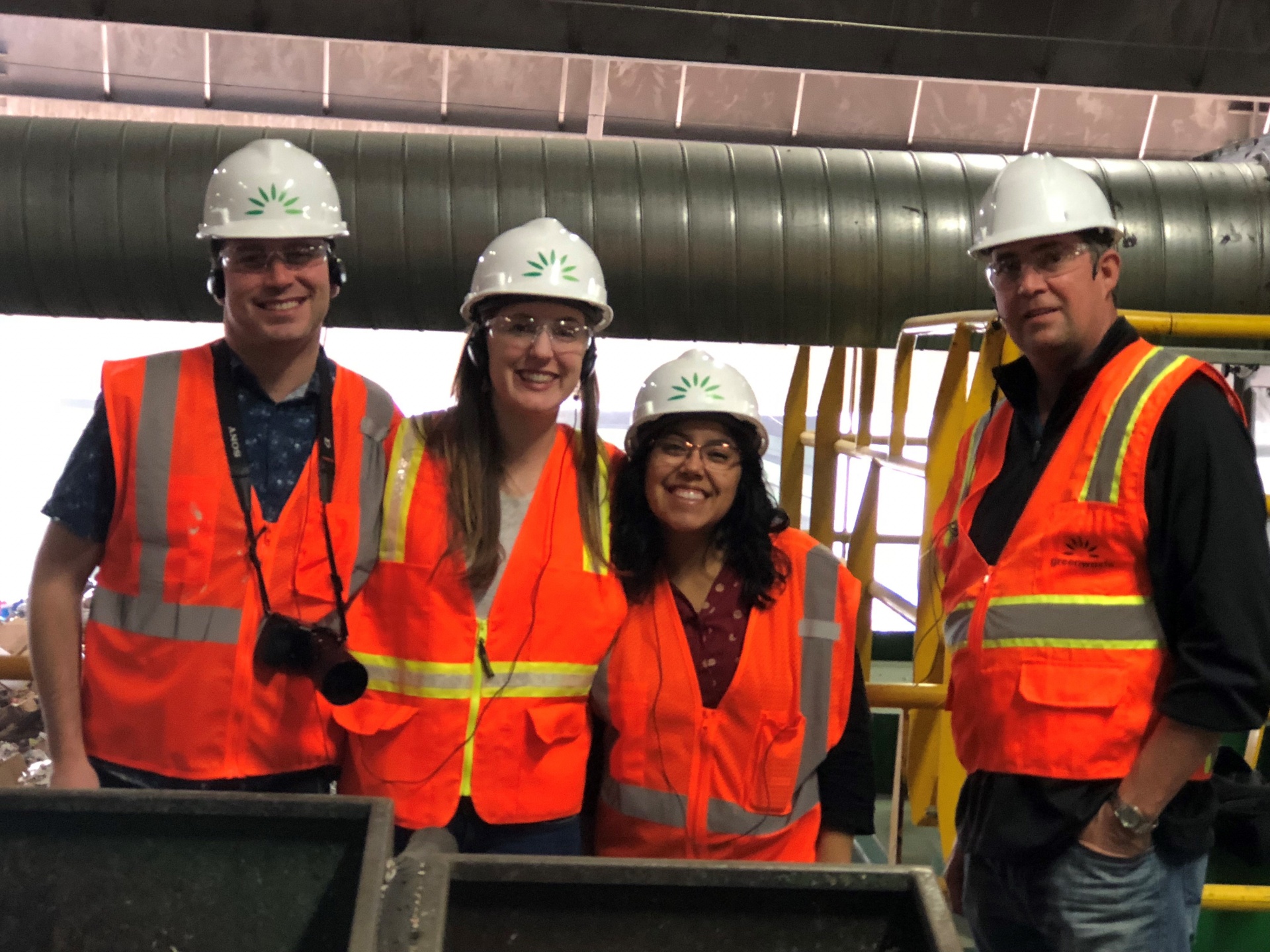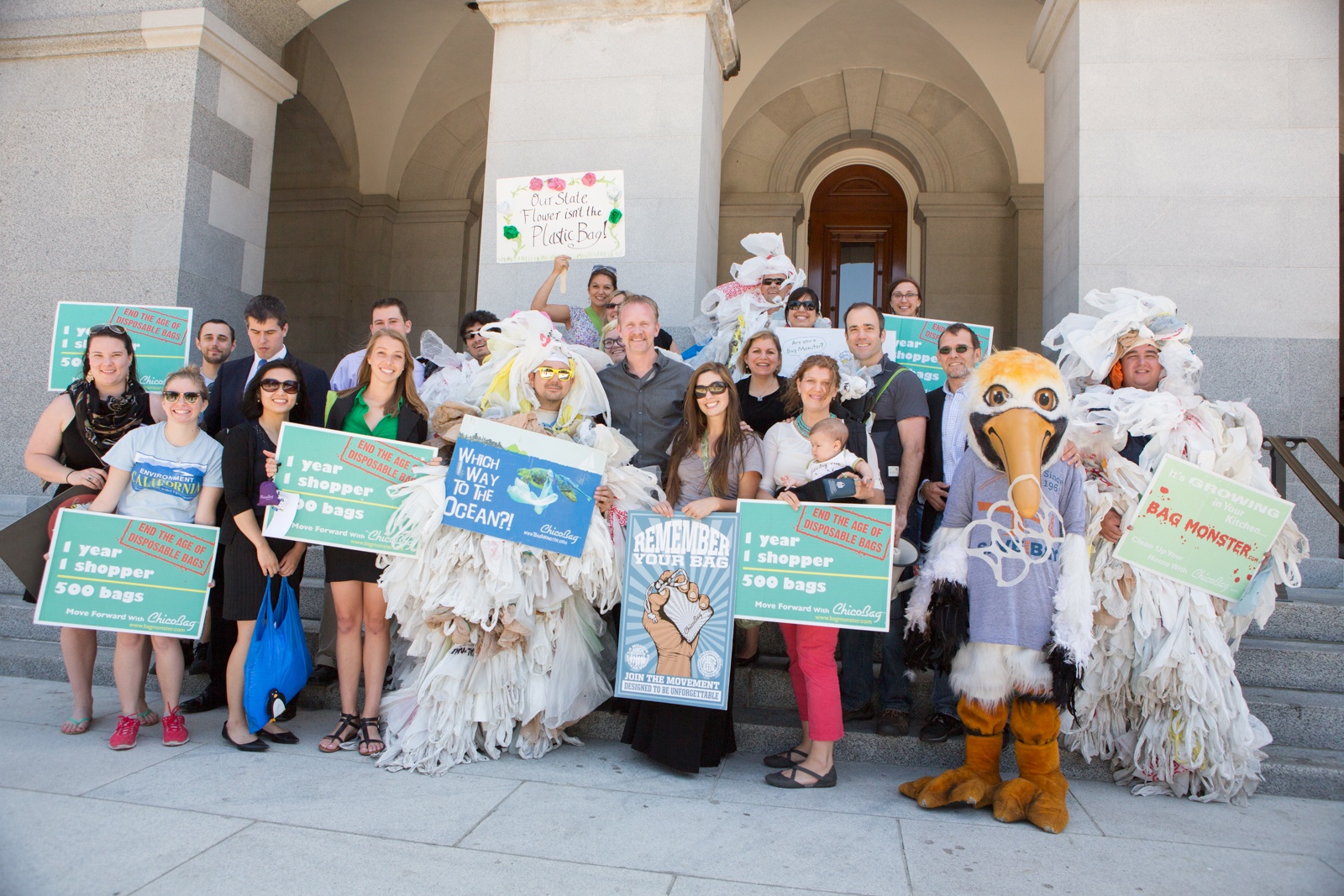Breaking Down the Recycling Industry
Do you ever wonder what happens to items after you toss them into the recycling bin? If you are like most people, you probably feel fairly confident that as long as you do the responsible thing and sort your recyclables properly, the rest will take care of itself.
In reality, what happens after you place items into your recycling bin is a lot more complex than most people ever realize. Our local recycling efforts are actually tied to a global system, an entire market that distributes recyclables to countries all over the world that in turn process the materials and make them into new products.
Following that water bottle or cardboard box down the recycling rabbit hole of collection, transport, processing, re-manufacturing, and redistribution can be a bit confusing, so we reached out to an expert to help us break it all down.

CSULB alum Melissa Romero has been a key player in recycling policies in California since graduating in 2015 with a degree in environmental science and policy. As a Policy Associate for Californians Against Waste (CAW), Romero has helped to sponsor legislation related to recycling, waste minimization, and source reduction and lobby lawmakers to support these efforts. There are thousands of bills introduced every year in the legislature and many of them have to do with important environmental and waste related issues. Romero’s primary role was to track those bills, lobby and support the bills that the public sponsors, and help pressure industries to make positive changes to reduce or mitigate their environmental impacts.
Romero offered to help us understand the complexities of the recycling industry, starting with the basics.
What does it mean for something to be "recyclable"?
Californians (and Americans generally) have many common misconceptions about the recycling industry. For example, Romero explained that most people tend to think that any plastic item with the little chasing arrow icon at the bottom is recyclable but that’s not always the case.
“What makes something recyclable is that not only is there a way to collect it, so your city or recycling program accepts that material, but that your recycling hauler and processor can actually sell that material to someone,” said Romero.
The chasing arrow icon with the number inside it is actually just a way to label the type of plastic polymer that was used to make the item. That information can be used to sort the materials by polymer type but after they are sorted, the processor has to be able to cover their processing costs by selling the material to a buyer who can make a profit by turning the recycled material into a new product.
The presence of the icon alone has no bearing on whether a particular type of polymer is valuable in the market.
Because of this, some processors are having to pay to get rid of some of those materials. That is because, as Romero explains “It is becoming non-profitable to recycle some of the stuff and part of the reason is some of it, especially the plastics, may havenever really been recyclable.”
Policymakers often have the best intentions when it comes to managing our waste issues, however, disconnects and miscommunications between policymakers, industries, and markets contribute to the mixed messaging associated with recycling. That leads to significant frustration toward policymakers and government agencies when messaging about what can and cannot be recycled seems to be constantly changing. This is one of the reasons why people have been told that certain items for which no viable end market exists are “recyclable,” only adding to the confusion. Plastic water bottles, for example, are an item that most people would consider synonymous with the term “recyclable," however, given the different variables that dictate whether something actually gets recycled the market ultimately decides whether it is a valuable commodity.
Overwhelmed? We’re just getting started.

“ I wish that people knew that it [California’s waste management system] goes much farther than just their blue bin.” - Melissa Romero
Beyond the little blue recycling bin and our local waste processing facilities, the system that manages our recyclables not only affects our local environment but also the environment of places around the world that other people call home.
In order for recycling to remain profitable, the industry has leaned heavily on developing countries where labor costs are much lower, and worker safety and environmental regulations are much more lenient (or non-existent). The recycling industry relies on a system that, in Romero’s words, “dumps waste plastic onto countries that sort through it, find the valuable stuff and the rest of it ends of polluting their backyards and their communities.”
It used to be the case that wealthier nations could rely on these countries to accept our waste. However, countries such as China recently set higher standards for what they will accept so the options have become much more limited. Managing millions of tons of plastic, paper, cardboard, and other waste is a serious social, environmental, and financial responsibility; a responsibility that countries are careful not to underestimate.
Depending on the market demand and perceived value of the materials, our recyclables are being sorted through and repurposed only if it can be remade into something else. What if that recyclable is not perceived to have value? It wastes away in someone else’s backyard, said Romero. Items that one would think are easily recyclable, such as paper, may not be recycled if the market does not demand it at the time.
We are left again with the question: what is recyclable anyways?
The not-so-simple answer is: it depends.
As much as we wish the answer to this question was cut and dry, as Romero puts it “people need to understand the whole system in order to understand what is recyclable.” Keeping track of this constantly changing system is no easy task; there are individuals whose academic or professional career is dedicated solely to this task.
If learning the in’s and out’s of the global waste management system isn’t your thing, there is an easier solution. You can simply decrease the amount of waste you create!
Sometimes the simplest solution is the best

If we, the product-consuming public, simply decrease the amount of waste we produce, the challenges of navigating the world of recycling would be much less intimidating. Industries respond to what the public demands, so if the public demands less single-use items and shifts towards durable, reusable items instead the market will likely deliver.
Shrinking our “waste lines” should be the first priority, but we should also work to support a shift to better recycling industry practices. Many opportunities exist in California for the recycling industry. For example, Romero explained that the potential exists to open new facilities to recycle material and make new products within the state. Doing so would help mitigate our over-reliance on overseas markets to purchase our recyclables, decrease the fossil fuel consumed to transport the materials in cargo ships, and create more jobs in the state.
Victories on the environmental front such as the CSU ban on single-use plastic distribution and the City of Long Beach ban on styrofoam containers are encouraging signals of the future. Still, our consumption level is a factor that, without significant policy, industry and behavioral changes, will only worsen the waste management issues we are facing.
“We should really be considering capping the amount of plastic that we are producing, putting out, and selling to California,” suggests Romero. “ If we can cap the amount of all that packaging that ends up in the stores that we all go to that could do a lot of good.”
If you take away one thing from this article, know that you, as an individual, have the power to make a HUGE difference by being more conscious of your consumption of single-use items and adapting your lifestyle to align with the principles of zero waste.
Romero hopes the public is aware of these challenges and that their behavior reflects on the notion that we need to focus more on the “rethink” aspect of the zero waste hierarchy and become less reliant on those blue recycling bins.
Get Involved
-
Focus more on reducing your waste rather than relying on recycling items. Check out our Zero Waste Tips to help get you started.
-
Encourage industries to reduce their waste and make their products with a more conscious product life cycle.
-
VOTE! Advocate for environmentally friendly policies and vote for people who align with your values
-
Be an active member in your local community
-
Follow Californians Against Waste on social media and sign up for action alerts.
About Californians Against Waste
Founded in 1977, Californians Against Waste is a non-profit environmental research and advocacy organization that identifies, develops, promotes and monitors policy solutions to pollution and conservation problems posing a threat to public health and the environment. Californians Against Waste's history has demonstrated it to be the nation's oldest, largest and most effective non-profit environmental organization advocating for the implementation of waste reduction and recycling policies and programs.
Californians Against Waste believes that when manufacturers are required to internalize the environmental externalities (costs) of material extraction, processing and manufacturing pollution, and end-of-life waste management in a product price, the market-place motivates them to reduce consumption, replace virgin resources with recycled materials, reduce toxicity and waste, design for maximum life and recyclability, and generally improve sustainability. This concept of Producer Responsibility lies at the root of virtually every legislative policy that CAW has pursued for the last 37 years.





